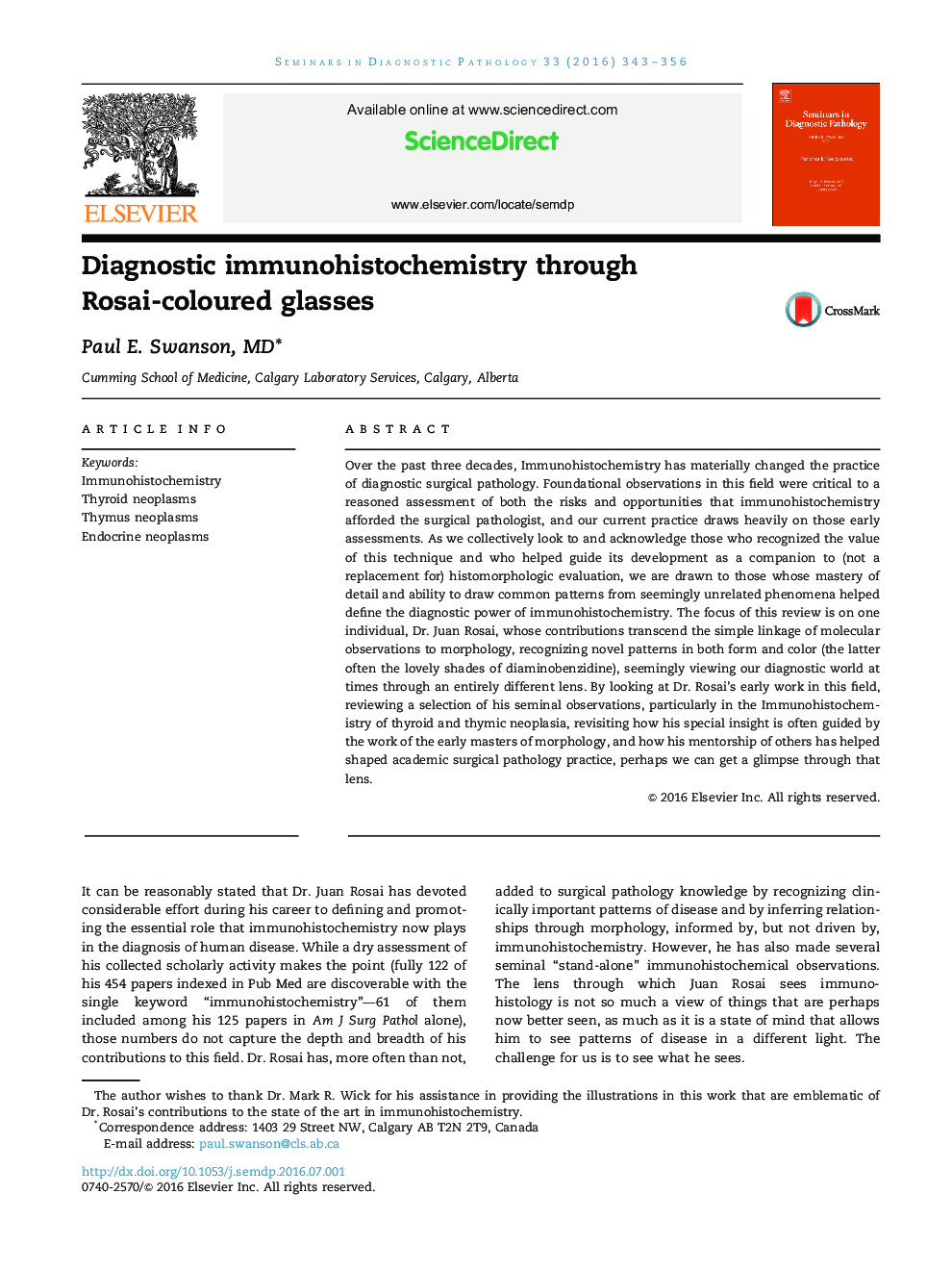| Article ID | Journal | Published Year | Pages | File Type |
|---|---|---|---|---|
| 4138149 | Seminars in Diagnostic Pathology | 2016 | 14 Pages |
Abstract
Over the past three decades, Immunohistochemistry has materially changed the practice of diagnostic surgical pathology. Foundational observations in this field were critical to a reasoned assessment of both the risks and opportunities that immunohistochemistry afforded the surgical pathologist, and our current practice draws heavily on those early assessments. As we collectively look to and acknowledge those who recognized the value of this technique and who helped guide its development as a companion to (not a replacement for) histomorphologic evaluation, we are drawn to those whose mastery of detail and ability to draw common patterns from seemingly unrelated phenomena helped define the diagnostic power of immunohistochemistry. The focus of this review is on one individual, Dr. Juan Rosai, whose contributions transcend the simple linkage of molecular observations to morphology, recognizing novel patterns in both form and color (the latter often the lovely shades of diaminobenzidine), seemingly viewing our diagnostic world at times through an entirely different lens. By looking at Dr. Rosai's early work in this field, reviewing a selection of his seminal observations, particularly in the Immunohistochemistry of thyroid and thymic neoplasia, revisiting how his special insight is often guided by the work of the early masters of morphology, and how his mentorship of others has helped shaped academic surgical pathology practice, perhaps we can get a glimpse through that lens.
Related Topics
Health Sciences
Medicine and Dentistry
Pathology and Medical Technology
Authors
Paul E. MD,
